Introduction

Why to buy it?
- Brisk acceleration
- Plethora of features
- Commendable agility
Why to avoid it?
- Committed riding position
- Tall seat height
The KTM RC 390 was first launched in India in 2014 when it garnered a lot of praise for its track-worthy performance and premium components. Then, KTM kept on giving it minor updates like the inclusion of a slipper clutch, a ride-by-wire throttle, new colour options, and a cleaner engine. But then, it started feeling a bit long in the tooth and a comprehensive overhaul was due for a long time. Well, KTM has finally addressed that by launching the 2022 RC 390 in India.
From its design and features to chassis and engine, almost everything has been revised with an aim to make it more versatile. In that case, have these changes played their part and made it more desirable? That’s what we tried to find out when we rode the new RC 390 around Bajaj’s testing track in Chakan, before we get to sample it in real-world later.
The Visuals

We are familiar with the new design of the motorcycle as it looks identical to the 2022 RC 200 and RC 125, barring the new paint schemes. In its latest avatar, it has done away with the sharpness of its predecessor in favour of a more mature and conservative design. The motorcycle looks bigger and more premium due to a larger front fascia, a two-part fairing, and a bigger fuel tank. Plus, the two new dual-tone colour options make it look quite tasteful. KTM says this design is also more efficient aerodynamically with better wind deflection and air channelling.

The build quality is about average, if not great. The paint quality is good, specifically on the fuel tank which boasts a matte finish. Even the plastic panels feel sturdy and well put together, except for minor uneven panel gaps around the fairing. What doesn’t leave any room for complaint is the quality of switchgear and the tactility of switches.
The Package

As I said before, almost everything on the RC has been tweaked with the intent to make it more of an all-rounder. Starting with the engine, the 373cc, liquid-cooled, single-cylinder mill gets a 40 per cent larger airbox, a new engine mapping, and a torque bump of 1Nm — all of it to achieve better torque distribution and rideability. While the torque output stands at 37Nm now, the power figure is the same at 42.9bhp.

The remapped engine clings on to a revised split-type trellis frame, as opposed to a single-piece unit on its predecessor. KTM claims this setup to be lighter, stiffer, and with better rigidity. You also get new five-spoke alloy wheels which, similar to the chassis, are lighter in weight. The suspension setup continues to comprise WP Apex inverted front forks and rear monoshock, but the travel has been increased, damping characteristics are different, and, besides preload, the rear gets rebound adjustability now. While the disc brakes retain the same diameter – 320mm up front and 230mm at the rear, these too are lighter. As a result, the overall kerb weight stands at 172kg now, which is down by 1kg.

Now, the real party lies on the feature front. KTM has bestowed it with some high-end electronics, which we see in much bigger motorcycles. There's a traction control system, lean-sensitive cornering ABS with two modes, and a bi-directional quick shifter. You can monitor and tweak all these features through the new full-colour TFT display and new switchgear. Notably, the console is the same unit as the 390 Duke which gets Bluetooth connectivity for smartphone pairing, multiple theme options, automatic brightness adjustment, call and message notifications, and shows a plethora of information. Lastly, with a capacity of 13.7-litre, the fuel tank is 4.2-litre bigger than the previous iteration of the RC.
The Ride

Just like the design, the ergonomics are identical to the RC200. The 824mm seat height is quite tall and if you’re shorter than my 5’11’’ stature, getting onboard could be cumbersome. And once seated, I could almost flat foot, with my heels slightly above the ground. Now, typical of a supersport, the riding position is a bit aggressive, but not as committed as the previous model. You crouch a little to reach the clip-ons with your knees properly folded to get to the pegs. And when you want to go full send, there's ample space to move at the back and tuck in. That said, track junkies will be happy to know that the clip-ons can be lowered by 10mm. As for pushing the bike around, it’s easily doable, courtesy of its 172kg kerb weight.

On to the performance now, off the line, the bike charges ahead vigorously and builds up pace cleanly, and with urgency. The motor truly comes alive after 6,000rpm and it keeps accelerating spiritedly until its redline of 10,000rpm. However, unlike the outgoing model, there's no sudden surge of torque anywhere in the rev band and the overall performance is quite linear. Thanks to the improved mid-range grunt, my wrong gear selections around corners were forgiven with a clean pull. Although I couldn't test the top speed, I saw 165kmph on the speedo on the main straight of the track. And that's where the new fairing design truly shone by doing a commendable job of deflecting wind and letting it all pass over my helmet.

The clutch is supremely light and accompanying it is a slick-shifting six-speed gearbox which works without any fuss. And so does the quick shifter! While the clutchless downshifts are free of errors, the upshifts misbehaved at times, especially around 8,000-9,000rpm. But for the most part, mainly between 3,000-8,000rpm, even the upshifts were seamless.

As for the new chassis, it feels quite communicative and bestows the bike with utmost precision. Tipping into corners is effortless and more progressive than before and holding on to the desired line is equally easy too. Then, it flicks from side to side with minimal steering inputs while not being unnervingly tippy to scare you off.

But I was left wanting for better grip from the Metzeler tyres. While they deliver reasonable grip around long sweeping corners, it was around sharp bends and at extreme lean angles that the rubber felt squirmy and didn't inspire a lot of confidence.

The new suspension setup, meanwhile, contributes to the cornering efficiency by soaking up mid-corner undulations neatly and not letting the bike unsettle. Even the front dive wasn’t unnerving under hard braking which meant tipping into corners was a smooth affair. Furthermore, every time I braked hard before a corner, there was a lot of stopping power from the front with a sharp bite and reasonable progression. Plus, the brakes didn't fade even after multiple laps around the track.
Should you buy it?

The 2022 KTM RC 390 had me smiling ear to ear after the 30 minutes riding session around Bajaj’s test track. It brings along almost all the ingredients to be extremely enjoyable around a track. The chassis is extremely communicative, the brakes have the bite, and the suspension holds up well when you're pushing it. The changes to the engine have surely robbed it of its hooligan character, but it isn’t boring by any stretch. The engine feels smoother, the torque distribution is wider across the rev band, and it’s more manageable. And the availability of a quick shifter only makes it more engaging. However, the seasoned corner-carvers might wince at the lack of grip from the W-rated Metzeler tyres around the edges.

With a price tag of Rs 3.14 lakh (ex-showroom), the new RC 390 is not profoundly expensive, considering the overall package it brings to the table. However, a lower price tag would have raised its desirability quotient. Now, to find out how it is to live with in the real world, and tour upon, stay tuned for our detailed road test review.
Photography by Kaustubh Gandhi
Gallery
1/115
KTM RC 390 Front Fairing
Double Tap to Zoom











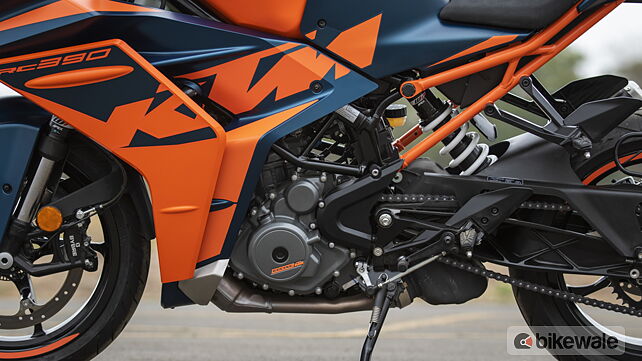












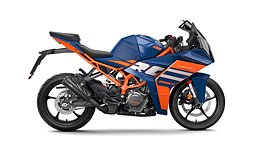
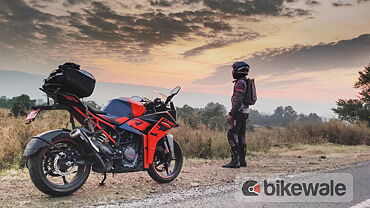
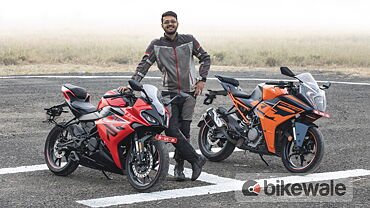

















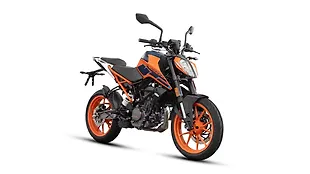
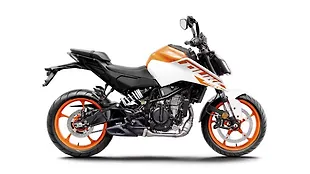
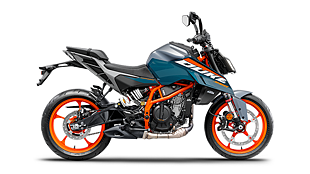





![KTM 390 Adventure X [2025] KTM 390 Adventure X [2025]](https://imgd.aeplcdn.com/272x153/n/cw/ec/190885/390-adventure-x-2025-right-side-view.jpeg?isig=0&q=80)